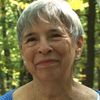This article was originally published on Voices of Aging.
The concepts behind the age-friendliness and livability movement are taking hold in communities across the country and I am delighted! Where I live in Newton, Massachusetts, a lot of work has been going on for the past five years to create a foundation, raise awareness, and develop plans to benefit our aging population. Close to 87,000 people live in Newton and our projections show that by 2030 30% of residents will be 60 and over; currently we seniors represented more than 23% of our population. Look at the census data for your own community and you will likely see a similar pattern. Of course, some communities have greater percentages of older people - especially in places where the weather is warmer than it is here in the northeast.
In response to these undeniable facts, the Newton Department of Senior Services and the Newton Council on Aging created their mission and vision using age-friendly/livable ideas, which guide their planning for now and into the future. We have initiatives throughout the city on housing and transportation which are critical pieces of what makes a community friendly to diverse people of all ages. For my own part, I have been writing about age-friendliness and livability for six years to bring the ideas to all of you. Our work has paid off.
In February 2016 Newton applied and was designated as a member of the World Health Organization and AARP Age Friendly Livable Community Network. In order to qualify as a member of this important world-wide movement, the city had to show its dedication by submitting with the application a letter of commitment signed by the chief elected official - our Mayor.
On September 20, 2016 Newton's WHO/AARP certificate of designation was presented at the Newton Free Library by the Director of Massachusetts AARP. It was accepted by the President and Vice President of our City Council, along with a representative from the Mayor's office. Our state Secretary of the Executive Office of Elder Affairs talked to the packed auditorium about how our efforts align with goals for Massachusetts. In the audience there were residents, City Council members, Newton Department of Senior Services, Council on Aging members, city staff, and guests from other communities. It was exciting and momentous. These kinds of events are happening all over the country because the time is ripe for creative thinking and planning about aging, and helping communities serve their older residents.
Why are age-friendliness, livability and this designation important and what does it all mean?
The driving force behind this phenomenon comes down to demographics. The world is getting older. The number of elders will continue to increase over time and the number of younger people will decline. There are two main reasons for this: people are living longer because of improved health care and fewer children are being born. This shift is huge and permanent. It is happening internationally, in the U.S., in most states, and in almost every city or town.
Back in 2000, AARP recognized this trend and produced the Livable Communities Evaluation Guide to help communities plan for their aging population. The World Health Organization, in 2005, developed the concept of age-friendly cities at the International Association of Gerontology and Geriatrics in Rio de Janeiro. In 2007, WHO produced the Global Age-friendly Cities: A Guide. WHO works with nations through whatever the AARP equivalent is in different countries.
In the U.S., WHO and AARP are approaching this endeavor by establishing networks of communities that can learn from each other about what age-friendliness and livability means to them uniquely, and to figure out how to implement meaningful improvements that are appropriate for each individual place. There is no one-size fits all.
The movement strives to engage cities to tap the potential that older people represent and to adapt structures and services to be accessible, and inclusive of older people with varying needs and capacities. The overriding theme is that what is good for older people is good for everyone. Communities all over the world are signing up including Brussels and Lyon. The entire country of Ireland has made the commitment. In the U.S. there are 117 communities including Portland, OR, and New York City. In Massachusetts we have Boston, Dartmouth, Martha's Vineyard, New Bedford, North Adams, Pittsfield, Salem, and now Newton.
An age-friendly/livable community involves improving the many different and complex arenas with which people interact every day. This includes appropriate, accessible, and affordable housing. It means good and safe ways for people to get around in cars, on public transit, with transportation services, on bikes, and walking. It means helping people to stay involved with friends, neighbors, and the community in ways that are significant for them. Housing, transportation, and community engagement are three of WHO/AARP's eight overarching domains of livability."
With all of this in mind, Newton has started its own home-grown initiative called PLAAN (Planning for a Livable All Age-friendly Newton). We now have the platform for age-friendliness/livability, basic planning has begun, and we are set to engage everyone who wants to be involved to join this historic undertaking. Our efforts are not distinctive to our community. Any location with a small group of dedicated people, the support of elected officials and community employees, access to good data and information, and a willingness to collaborate for an inclusive future can do it and join with the groundswell of age-friendliness.
Read more from Marian L. Knapp here: VoicesofAging.com
